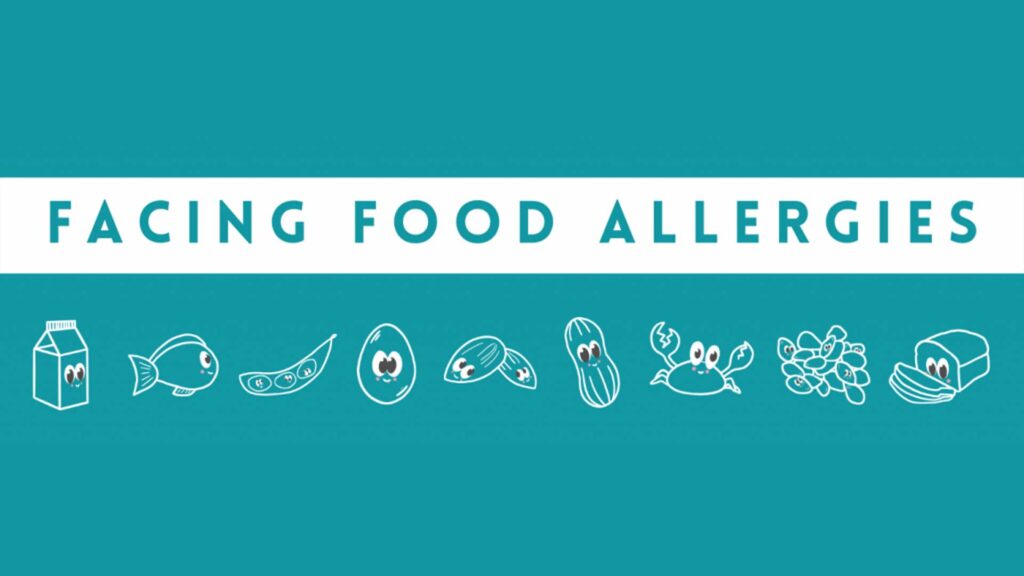Hi! My name is Serene Puri. I’m the editor of the Facing Food Allergies project. Whether you have allergies like mine, a relative or friend who does, or are a medical professional who helps those who do, I hope you’ll consider sharing your story. You can also support this project by donating toward the publication of our book.
About The Facing Food Allergies Project
I have lived with severe food allergies to dairy, all nuts, and sesame seeds my entire life. And that doesn’t just mean I can’t eat PB&J’s and have to avoid birthday cake. For me, the smallest amount of any food containing my allergens could put me in severe danger. I’ve had to use an EpiPen and spend the night in the ICU 12 times as a result of complete accidents.
When I was a little girl, I was the only person I knew who had food allergies, who wasn’t allowed to participate in class parties, and who couldn’t go to restaurants all the time like her friends. As I grew older, it has been comforting to meet other people who have experienced the same thing. That’s where this project comes in. I’ve found that the best way to connect with and educate people who don’t understand food allergies is through sharing stories. And that’s exactly what the Facing Project is all about. Stories will be shared on The Facing Project site, archived at Ball State University, considered for The Facing Allergies book which will be available in paperback and as an ebook, and could even be selected for The Facing Project radio program on NPR.
So, I want to hear your stories! Here’s how to get started.
Step 1: Find a partner and sign up
No one tells their story alone. If you’d like to share your story, find a friend or family member willing to listen to your story. If you’re not in the same household, connect via phone or virtually. They’ll take notes or record your conversation, and then reflect what you said in an 800-1,200 word first person narrative.
Or if you have a friend, family member, or colleague who has a story you think should be shared, ask them if you can write their story.
All stories are told using The Facing Project model (see full tips and guidelines and a video of a storytelling training below):
- Stories are written in first person (first draft written by listener).
- These are true stories. Don’t make anything up!
- Be careful naming 3rd party organizations or people by name.
- Stories should focus on lived experiences and not simply opinions.
- Best stories take readers into defining moments.
- The storyteller (person sharing story) is in ultimate control over their story and how/if it will be published.
Step 2: Submit your story
Our editors will instruct you how to submit your first draft. After you do so, our editors will get back to your team with comments and suggested edits.
Step 3: Makes edits and release your story
Approve or reject our team’s edits, or make additional changes. Once you are happy with the story each of you must fill out a release for the role (storyteller release / writer release) you played on your team.
There is strength in our stories
Growing up with food allergies brings with it a lot of anxiety, because I always have to be on high alert and I have no choice but to be diligent. Did this chef use butter or oil to cook these vegetables? Am I sure that the barista didn’t accidentally give me someone else’s coffee with cow’s milk? Did a piece of cheese accidentally fall into the beans at Chipotle, and now is my whole bowl contaminated? You get the picture.
Over my lifetime, I have had to educate the people around me on the importance of being cautious and aware when it comes to food and food allergies. I’ve even built friendships and communities with people who share similar experiences to me. I find comfort in knowing that I am not alone, that other people experience the same anxiety-inducing things as me.
We are all in this together and each of us has a story to share, and each of us can find hope and understanding through the stories of others.
Guidelines & Storytelling Tips
(This training was for a different project, but it can still help you with this project.)
Have a chat Skype, Zoom, phone, or some other appropriately-distanced method unless you live in the same household already. Allow ample time for a chat. Try to find a key moment or a few key moments of the storyteller’s life to dive into. Focus on details that take us into these moments.
All stories are written in the first person (“I knew everything was going to change the day…”) from the storyteller’s perspective. Think of this as a monologue. Stories are typically between 800 to 1,200 words in length.
Voice! Voice! Voice! Record the conversation. Writers take good notes. We recommend transcribing the audio from the parts of the conversation you want to focus on. There are transcription services that do this automatically when you upload audio. We recommend Temi.com, which does this in under 5 minutes. The first upload is free at Temi, and 10-cents/minute after that.
Tell true stories. Don’t make anything up. Don’t embellish.
Be careful naming 3rd parties. We prefer not to get sued, so if a story mentions a third party (person, institution, or business) in an unflattering manner, please use discretion whether to name them directly. Our editors will be watching out for this as well. We’re all for raging against the machine, but at times we have to tread carefully so the machine doesn’t chew us up and spit us out.
Stories should focus on lived experiences and what was learned and felt. Stories shouldn’t be rants or manifestos or analysis of current events or a time to grind an axe.
You don’t have to give every single detail – the best stories just drop the listeners right into the story without having to give the listeners every single detail.
Great questions lead to great stories, but the most important thing is to be genuinely interested in the person you are talking with. An ideal scenario is that you ask: “What made you want to share your story with this project?” and then the conversation flows from there. That said, it’s not a bad idea to have a few questions prepared. Story Corps has a great list of questions.
You are collaborators, but the storyteller has ultimate control over the story. The writer should take a shot at the first draft, but after that the storyteller says what stays, goes, or is added. It’s their story!
Once you’ve both reviewed the story submit your story.
We’re here to help. Our team of editors at The Facing Project have polished thousands of stories. We can help get your story to the place where it makes the most impact, spreads understanding and inspires action.
If you have any other questions or concerns, please email the Facing Project at howdy@facingproject.com


